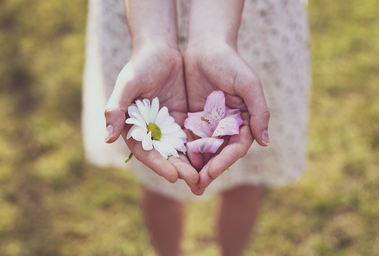It’s spring quarter: it’s time for fun and, most importantly, sun! Everyone wants a tan to sport along with their spring sundresses and blouses, but, for some of us, achieving a golden glow can be difficult. As a fellow pale-skinned person, I am VERY familiar with the tanning struggle. It is no secret that there is a big difference between the rosy red of a sunburn and the beautiful brown-gold of a tan. So how can us ivory ladies achieve the color and avoid the burn?
Here are four tips from a ginger who knows your struggle.
- Start slow and be kind to your skin.
-
In the case of tanning, the saying “good things come to those who wait” very much applies. I know that many of us may be in a rush to achieve color as fast as possible before our respective music festivals and daygers, but I promise you slow and steady wins the race. You certainly do not want to show up with pink skin (it’s a hard color to coordinate outfits with).
When first beginning to tan, start by laying in the sun for 10-15 minutes maximum. After doing this for a few sessions, Carrot Sun suggests adding time in increments of 5 minutes. Eventually, you will be able to build your tanning time safely, avoiding burns.
It is also important to remember that color does not show up right away. Tanning is the production of melanin in your skin cells. According to tanning experts at Carrot Sun, this production continues for a few hours after you have been in the sun, so you don’t need to sit in the sun until you see a color develop. The sun stimulates your cells, let them do work!
There’s one more important thing: Dr. Nick Lowe in his interview with Cosmopolitan reminds us to keep in mind that when building our tanning tolerance, “Everyone has their own melanin cut-off, typically two to three hours or much less if you have fair skin.” After this, you’re just subjecting your skin to the risk of UV damage.
- SPF is key.
-
When tanning, wear sunscreen! A commonly used tanning strategy is laying in the sun to burn, then waiting for the burn to turn into a tan. This not only does not work for people of pale color but increases risks of skin cancer. According to Carrot Sun, this may be the case if you have olive skin. But if you are fair, chances are you have damaged your skin and dried it out. On the contrary, wearing sunscreen actually gives your skin a better chance of producing melanin because it is in a healthier situation.
When choosing your sunscreen, Elite recommends reaching for bottles that are SPF 15 and above. It is also best to not go over SPF 30, after all, we don’t want to block out all of the sunrays. They also recommend SPF that pairs with a browning lotion or one that applies in oil-form.
- Switch out tanning oils for sun-friendly food.
-
Yep, you read that right! You can tan from eating. Isn’t that the best? According to Cosmopolitan, eating foods with lycopene, a natural pigment that gives some vegetables and fruits their red color, helps enact your skin’s natural SPF due to its antioxidant properties. Foods that contain lycopene include fruits and veggies, green tea, fish, and dark chocolate (yum!). These foods have the potential to increase natural sun protection by 33%.
- Avoid tanning beds.
-
Yes, tanning can very frustrating, time-consuming, and uneven. But no matter how much you want to give up, do not resort to the tanning bed. While they provide a quick tan, they are in fact far more dangerous than laying in the sun.
According to Sun and Skin News, “People who have ever used a tanning bed have a 67 percent increased risk of developing squamous cell carcinoma and a 29 percent increased risk of developing basal cell carcinoma. People who first use a tanning bed before age 35 increase their risk of melanoma by 75 percent.”
This is because tanning beds emit both UVA and UVB ultraviolet rays, both of which contribute to skin cancer. UVA causes accelerated aging, while UVB causes sunburns, so watch out! Take the time to tan and skip the burn.
Hopefully, these tips were able to shed a little (sun)light on your tanning process. Now, go out and start working on that golden glow!



